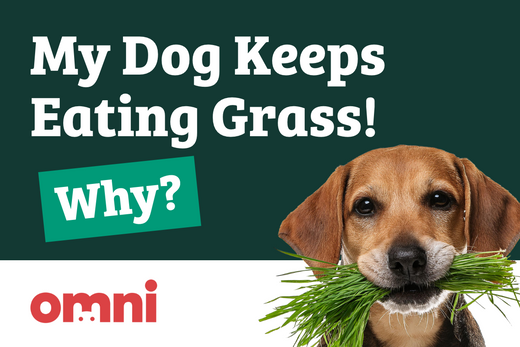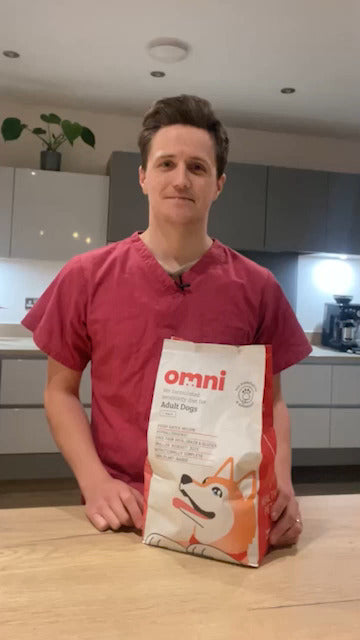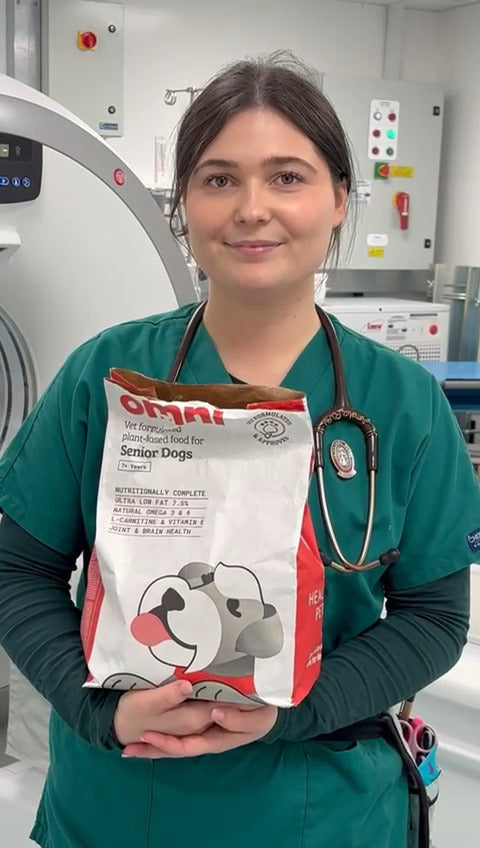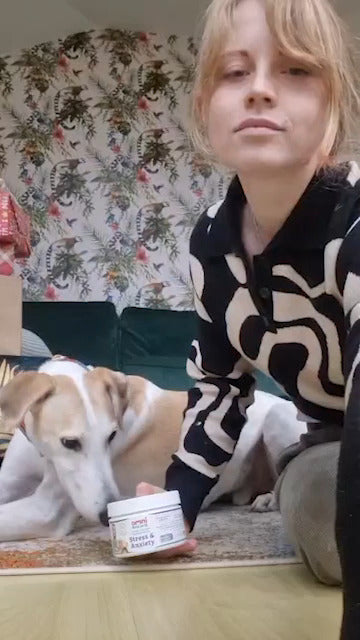My Dog Keeps Eating Grass! Why?

My Dog Keeps Eating Grass! Why?
Last week, when I was scrolling back through all the emails and messages our vet team have received, I got a text from one of our employees at Omni, Rory.
Rory has a little dog called Lily, a Maltese Terrier crossed with a Toy Poodle, who has recently taken to eating grass on all their dog walks.
It isn’t too concerning a behaviour usually - eating grass can have any number of causes - but he texted me out of concern, as Lily is getting a bit older these days and so it’s good to keep an eye out on any changes in behaviour.
In this article, I’ll discuss all the commonest causes of grass-eating in dogs, how concerned you ought to be about your dog eating grass, and how to stop this behaviour from arising or continuing in future.
If you’ve got a problem you’d like to be included in Omni’s Ask a Vet series online, just drop us an email to woof@omni.pet.
Our Chief Veterinarian, Dr Guy MRCVS had this to say:
Like most symptoms, your dog eating grass can have a number of causes, including:
- Feeling sick. This could be because of a tummy bug or infection, having eaten the wrong thing, or a variety of other causes like a chronic condition, travel sickness, or an allergy.
- Feeling hungry and empty.
- Nutritional deficiencies. These can be very common in dogs, especially when their diet is mixed or incomplete. More on these below.
Why Is My Dog Eating Grass?
Is Your Dog Feeling Sick?
Just like us, our dog can feel sick for any number of reasons. Your dog could feel sick due to infections or bugs, travel sickness, anxiety, or allergies and intolerances to something they have eaten.
If you are worried that your dog may be eating grass because they are feeling sick, you may also want to look out for:
- Vomiting.
- Diarrhoea.
- Lethargy or tiredness, often expressed by an unwillingness to get up or go on walks.
- Inappetance (the clinical term for ‘loss of appetite’).
How to Help Your Dog Through Feeling Sick
One way to help your dog through feeling sick is through a bland diet alongside plenty of water in order to flush out any latent pathogens.
This bland diet may consist predominantly of substances like rice and sweet potatoes, which are great sources of carbs, vitamins, and calories, but do not have strong tastes for dogs and do not have a complicated mixture of ingredients that may only worsen their symptoms.
It is recommended to stick with a bland diet of this sort for 3-7 days. If symptoms persist longer than this or your dogs general health worsens, then it is best to consult with a vet.
Does Your Dog Feel Hungry or Empty?
It may be that your dog feels hungry or empty, hence why they are essentially supplementing their diets with grass, flowers, and other edible plants they might find on walks.
In this case, you’re going to want to look out for:
- Your dog might be begging for food.
- Your dog could be licking their lips often.
- Your dog being restless or seeming uncomfortable.
How to Address a Hungry Dog
You might think it’s simple: just feed them more!
Unfortunately, overfeeding dogs can have negative effects on the dog’s health and wellbeing too, so while it may be a solution to the grass-eating problem, it may only serve to introduce other issues to your dog’s sense of health and wellbeing.
In this case, Omni’s vets recommend:
- Feeding your dog smaller meals, more often. Even if they are eating the same amount in total, spreading it through the day means their hunger levels and blood sugars stay more constant, helping to prevent grass-eating behaviour.
- Using a feeding guide to check that you are feeding your dog the right amount. All of Omni’s food all has feeding recommendations on the packaging based on age, size and weight of your dog.
- If symptoms persist, do talk to a vet. Your dog being constantly hungry could also be a sign of a parasite or a more serious condition, too, so it is worth getting expert advice and treatment.
Nutritional deficiencies Cause Dogs to Eat Grass, Too
Most people have at least one nutritional deficiency, and best estimates suggest that the same is true of dogs, too.
The problem is that we humans generally don’t understand our own nutritional needs and requirements, and we’re even worse when it comes to our dogs. Deficiencies often fly under the radar until it’s too late and your dog is already resorting to eating grass.
To properly evaluate whether your dog is experiencing the signs of nutritional deficiencies, make a note of:
- Lethargy or generalised tiredness and lack of desire to get up and go for walks.
- Vomiting or diarrhoea.
- Weight loss over a sustained period.
Take these notes to your vets, along with a food diary of what your dog has eaten over the preceding week, so that they can make the most accurate diagnosis possible.
How to Support Your Dog With Nutritional Deficiency
Here, it is important to recognise the distinction between a ‘complementary food’ and a ‘complete food’. Many dog foods on the market are ‘complementary’; that is, they do not actually contain every nutrient your dog needs, but are instead designed to form a part of their wider dietary pattern.
Omni specialises in complete foods: every kind of dog food (including our wet food) in our range is designed to give your dog every single nutrient they need.
If you are concerned your dog isn’t getting all the nutrients they need from their diet, set up a free call with one of our expert vets to discuss the possibilities.
In addition, you may want to start using a Home Cooking supplement (which acts as a multivitamin), especially if your dog is on a raw, homecooked, fresh frozen, or otherwise varied diet.
Speak with a vet if…
If you are worried that your dog is either not improving at all or is getting worse, make sure to speak to a vet.
Take your dog to your vets if…
Your dog is lethargic, losing weight, and/or unable to keep water down.
Thoughts from Dr Guy MRCVS
As dog lovers and guardians, it’s natural to worry about our furry friends, especially when they display abnormal symptoms that can’t be easily explained. That’s why, when I founded Omni, I knew that I wanted to keep vet consultation free and accessible at the heart of the business.
If you’re understandably worried about your dog, but you don’t think you need to take them to the vets urgently, I highly recommend getting some friendly, professional advice from one of our team.
Got a question for the Ask a Vet team?
Submit your question below, or email it in to woof@omni.pet. We’ll get back to you as soon as we can, and, if suitable, post the response here to help others, too!
Disclaimer: Whilst the advice given here is based on medical experience from our experts, and scenarios we do encounter during our career - we do not give tailored or specific advice for individual pets - please seek assistance from your in person vet as a first point of call with any issues your pet is having which are a cause for concern as soon as possible.







 85 Great Portland Street, 1st Floor, London, W1W 7LT United Kingdom
85 Great Portland Street, 1st Floor, London, W1W 7LT United Kingdom